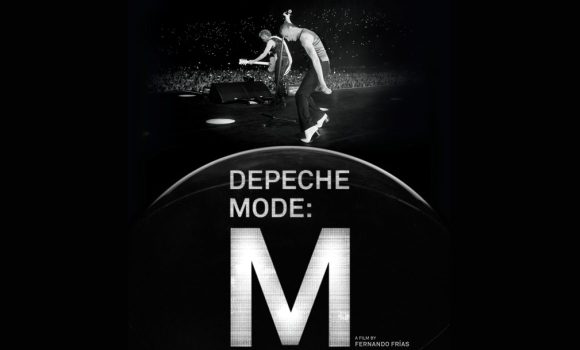In the diverse landscape of music education, online piano lessons have carved a niche that resonates with the individual needs and learning styles of students. New approaches mark a significant shift from one-size-fits-all teaching methods to more tailored, student-centered learning experiences. Through the lens of various learning styles, we examine how online piano lessons can be adapted to meet the unique preferences and strengths of each student, thereby enhancing their learning journey and fostering a deeper connection with music.
Understanding Learning Styles in Piano Education
Recognizing and addressing different learning styles is important in the realm of piano education, especially in the online environment. Learning styles refer to the various ways individuals process and retain information. In the context of piano lessons, this translates to how students best learn musical concepts, techniques, and pieces.
- Visual Learners: These groups of students who comprehend and recall information more effectively through visual presentations, find advantages in online piano lessons where resources such as annotated music scores, video demonstrations, and graphical depictions of musical concepts cater to their preferred learning style.
- Auditory Learners: Auditory learners excel when they can hear and process information. Online platforms cater to these students through detailed audio explanations, listening exercises, and opportunities to play along with recordings.
- Kinesthetic Learners: These individuals learn best through hands-on experiences and physical activities. Online piano lessons for kinesthetic learners often involve interactive exercises, where students can engage directly with their keyboards, and tactile learning tools that can be used in conjunction with the digital platform.
- Reading/Writing Learners: Students who prefer reading and writing to absorb information thrive with textual materials. Online lessons for these learners are enriched with extensive written explanations, theory notes, and opportunities to compose or transcribe music.
- Social Learners: These learners benefit from interacting with others. Online piano platforms can facilitate this through group lessons, forums for discussion, and collaborative projects with other students.
- Solitary Learners: Contrary to social learners, some students prefer self-study and introspection. Online lessons for solitary learners are designed to be self-paced, with a focus on individual practice and personal reflection.

By understanding and implementing these learning styles, online piano lessons can be tailored to suit the individual needs of each student. This personalization not only makes learning more effective but also more enjoyable, encouraging students to engage deeply with their piano education.
Tailoring Online Lessons for Visual Learners
Online piano learning platforms employ a variety of techniques to cater specifically to visual learners, who grasp and retain information more effectively through visual cues and representations. Here are some key strategies these platforms use:
1. Video Demonstrations and Tutorials – High-quality video content showcasing hand positioning, posture, and techniques. Allows visual learners to observe and mimic the physical aspects of playing, such as finger movements and pedal use.
2. Animated Keyboards and Visual Guides – Use of animated keyboards and visual guides that light up or highlight keys during lessons. Helps in understanding which notes to play and their duration, making it easier to follow along.
3. Graphical Representations of Music Theory – Presenting music theory concepts through charts, graphs, and diagrams. Simplifies complex concepts like scales, chords, and intervals, making them more accessible to visual learners.
4. Color-Coded Music Sheets – Using color-coded notes on digital sheet music to indicate different pitches, rhythms, or fingerings. Enhances the readability of music sheets, aiding in quicker and more effective learning.
5. Interactive Software with Visual Feedback – Software that provides real-time visual feedback on the student’s performance, such as highlighting correctly and incorrectly played notes. Offers immediate visual cues for self-correction and reinforces learning through instant feedback.
6. On-Screen Metronomes and Visual Rhythm Tools – Incorporating visual metronomes and rhythm tools in the lesson interface. Assists in understanding timing and rhythm visually, complementing auditory cues.
Adapting Online Lessons for Auditory Learners
Online piano lessons can be uniquely adapted to suit auditory learners, who process information effectively through listening. These learners excel when they can hear explanations, musical pieces, and nuances in sound. Here’s how online platforms cater to their needs:
1. Detailed Audio Explanations – Providing comprehensive verbal instructions and explanations for various piano techniques and music theory concepts. Auditory learners can grasp complex ideas more effectively when they are explained in detail through audio.
2. Listening Exercises – Incorporating exercises that focus on listening to different musical pieces, rhythms, and styles. Enhances the ability to identify and understand various musical elements, improving ear training and musical perception.
3. Play-Along Tracks – Offering tracks that students can play along with, including both accompaniments and full ensemble pieces. Helps in developing timing, rhythm, and the ability to play in sync with other instruments or backing tracks.
4. Interactive Feedback on Playing Technique: Using technology that listens and provides immediate auditory feedback on the student’s playing, indicating areas of improvement.
Impact: Allows for real-time correction and reinforces learning through immediate auditory response.
5. Voice-Activated Tools – Integration of voice-activated tools for interactive learning experiences. Facilitates hands-free learning and allows auditory learners to focus on the audio component without distraction.

Final thoughts
The versatility of online platforms, with their array of tools and resources, offers an unparalleled opportunity to customize lessons. This approach not only caters to individual learning styles but also nurtures a deeper, more personal connection with music. As technology continues to evolve, the potential for even more personalized and adaptive learning experiences in the realm of online piano education is vast and promising.
In conclusion, the future of piano education is one that celebrates diversity in learning and teaching. By continuing to adapt and innovate, online piano lessons can provide a rich, inclusive, and supportive environment for all learners, regardless of their individual learning styles. This tailored approach does more than teach piano; it fosters a lifelong love and appreciation for music in students, paving the way for a more vibrant and diverse musical world.




